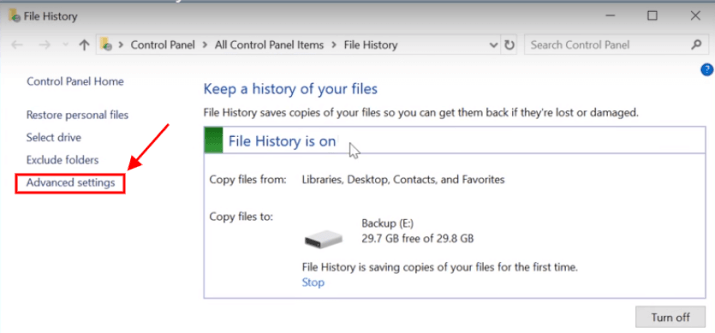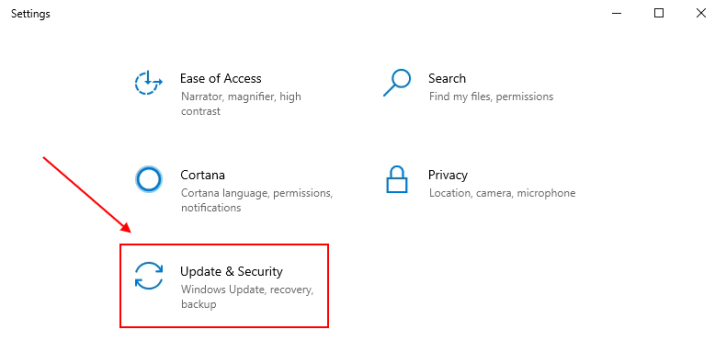It’s quite common that you would like to have a backup of all your data in your system since it helps with the future need for restoration. Majorly, these backup systems are automatic in nature. This can lead to Windows saving many unwanted files in an automated manner.
This will eventually be leading to finishing your backup storage space on the system. What can you do when there is no space available on your backup storage disk?
Well the best idea is to delete all previous backup and make space for new ones. How to delete backup files in Windows 10? Here we will discuss different methods that can help you delete your backups.
4 Methods to delete backup files in Windows 10:
Method 1: Deleting files directly from Windows File History:
File History is the backup folder in your device that stores copies of all the videos, documents, images etc. of your computer desktop. This is the place you go to restore files when the original file goes missing from the system. Believe it or not, File History takes up a lot of your disk space.
You can, however, delete files directly from this backup folder as below –
1. Press the keys “Win + R” in order to open you “Run” box.
2. Type the command “control” and then press the key “Enter” to open Control Panel Window.

3. Click on “System and Security”, followed by “File History” in the Control Panel Window.


4. Go to the left side of the File History Page and click on “Advanced Settings”.

5. From Advanced settings go to “Cleanup Versions”.
6. A new box called “File History Cleanup” pops up now.
7. Select the “target time period of the files” followed by the “Clean up” Tab to process.

8. Upon completion of the cleanup you receive a pop-up alert. Click on the “OK” button to finish the process.
File History deletion method can also be used for instant removal of backup that was saved earlier under File History. You can get this done by getting Admin access to Windows PowerShell. You get access to this menu from the Start option again. Once the PowerShell window opens up on your screen, type out ‘fhmanagew.exe- cleanup 0’ and click on Run. This removes any kind of recently added backed-up file.
Here, ‘0’ stands for days or time frame of the backup needs to be deleted.
Once the backup clearance is successful, your window will prompt the success.
Method 2: Use of Command Prompt to delete backup files:
This method is effective no matter where the backup file is stored be it the Control Panel or the external drive.
1. Press the Keys “Win+R” to open your “Run Box”.
2. In the Run box type out the “CMD” in order to the Command Page and Press “Enter”.

3. Below are a few commands that specify the time period that you want deleting. Press the combinations accordingly and Enter to give the command in the new Page.

▶ For deletion of latest files:
- FhManagew.exe -cleanup 0
- FhManagew.exe -cleanup 0 -quiet
▶ For deletion of files that are older than 30 days:
- FhManagew.exe -cleanup 30
- FhManagew.exe – cleanup 30 -quiet
▶ For deletion of files that are older to 3 months:
- FhManagew.exe -cleanup 90
- FhManagew.exe -cleanup 90 -quiet
▶ For deletion of files that are more than 6 months old:
- FhManagew.exe -cleanup 180
- FhManagew.exe -cleanup 180 -quiet
▶ For deletion of backups that are older than a year:
- FhManagew.exe -cleanup 365
- FhManagew.exe -cleanup 365 -quiet
The “-quiet” command might be helpful as well.
- In case the command doesn’t yield any file within the desired time frame, close the command page, and repeat the 3rd step with a different time frame.
- On completion of successful Cleanup expect a pop-up notification alert with ‘OK’ to click on.
Method 3: Deleting Windows 10 backup with the built-in device tools to cleanup old version:
The ‘Backup and Restore’ tool of Windows helps with both restoration and deletion as per the requirement. The method to use this in-built tool can be elaborated in the following steps –
1. Go to the “Start Button” of Windows 10
2. Select the “Settings” option to check the security settings.

3. Click on “Update and Security” from the settings page.

5. From Update and Security now Click on “Backup ”.
6. It shows a new Page called “Go to Backup and Restore (Windows 7)” Click to open this.

8. Find the option “Manage Space” from the restore window and click on the same.

10. The new window opens with 2 links:

A). View Backups: Clicking on the “View Backup” link takes you to “Data File Backup”. From this you get to select the period for deletion of backups. Select the time frame and press “Ok” to continue with the process.

B). Change Settings: The “change Settings” link helps you to cleanup backup storage space by bringing change to the windows data retention process. Windows 10, this allows automatic deletion of all old backups.

Method 4: Deletion of Windows 10 Windows.old, the backup folder by Disk Cleanup method:
Windows.old is the backup folder, that gets created post upgradation your Windows to version 10. This backup folder stores all installed software and files present in the system before Windows upgradation.
One can delete these Windows.old folder manually. But once deleted the same can’t be accessed and no revert to old windows version would be possible.
To delete it, the below steps will be helpful.
1. Go to the “System Disk” and Right-click on the “Properties” option.

2. Once the “Properties Window” opens go “Disk Cleanup” and click.


3. After that select “Clean up System Files” Tab.

4. You will get a drop-down list from that. Select the option for “Files to Delete”.
5. You will get the option of files that are to be deleted. Check on the box that says, “Previous Windows Installation”.

6. Click on the “OK” option from the pop-up box to finish the cleanup process.
Conclusion:
All these methods are individually successful in guaranteed deletion of the backup files from Windows 10. However, once the backups are deleted by these methods, restoring any old data or installation will be impossible. These methods are only to be used when there are unnecessary backup data in your system or if you need to free some space from the disc.
Read Also:
- 5 Ways to Turn Off Sticky Keys in Windows 10 Permanently
- 9 Ways to FIX No Audio Output Device Is Installed Windows 10
- 6 Ways to Fix Your Windows License Will Expire Soon Error
- 9 Effective Methods to Fix Windows 10 Update Error Code 0x8024a105
- 10 Best Overclocking Software Work for *CPU/GPU/RAM* in 2021

